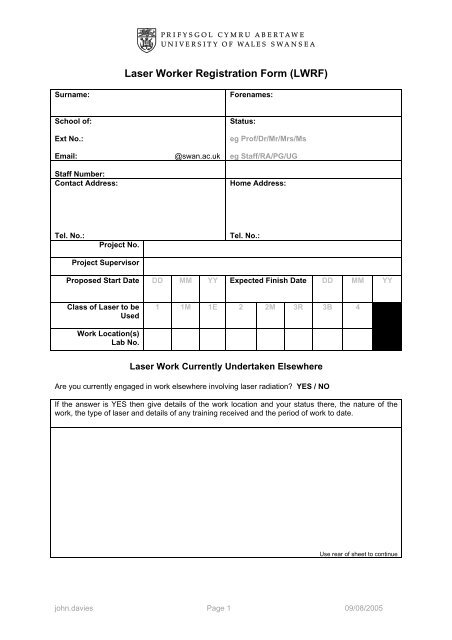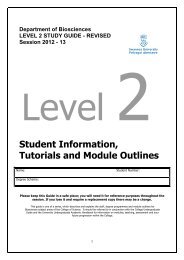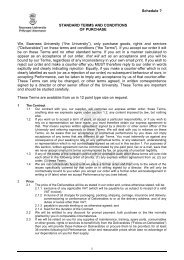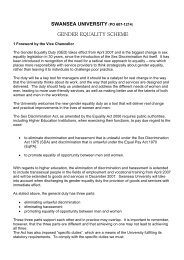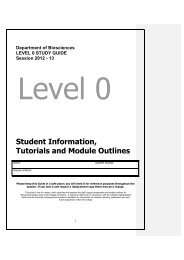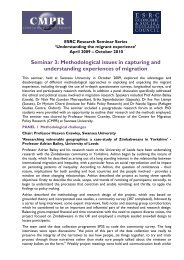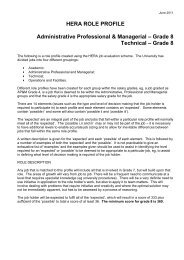Laser Worker Registration Form (LWRF) - Swansea University
Laser Worker Registration Form (LWRF) - Swansea University
Laser Worker Registration Form (LWRF) - Swansea University
Create successful ePaper yourself
Turn your PDF publications into a flip-book with our unique Google optimized e-Paper software.
ABCDEFGHI<br />
<strong>Laser</strong> <strong>Worker</strong> <strong>Registration</strong> <strong>Form</strong> (<strong>LWRF</strong>)<br />
Surname:<br />
Forenames:<br />
School of:<br />
Ext No.:<br />
Email:<br />
Staff Number:<br />
Contact Address:<br />
@swan.ac.uk<br />
Status:<br />
eg Prof/Dr/Mr/Mrs/Ms<br />
eg Staff/RA/PG/UG<br />
Home Address:<br />
Tel. No.:<br />
Project No.<br />
Tel. No.:<br />
Project Supervisor<br />
Proposed Start Date DD MM YY Expected Finish Date DD MM YY<br />
Class of <strong>Laser</strong> to be<br />
Used<br />
1 1M 1E 2 2M 3R 3B 4<br />
Work Location(s)<br />
Lab No.<br />
<strong>Laser</strong> Work Currently Undertaken Elsewhere<br />
Are you currently engaged in work elsewhere involving laser radiation? YES / NO<br />
If the answer is YES then give details of the work location and your status there, the nature of the<br />
work, the type of laser and details of any training received and the period of work to date.<br />
Use rear of sheet to continue<br />
john.davies Page 1 09/08/2005
abcdefghi<br />
Previous Experience<br />
Prior to coming to <strong>Swansea</strong> <strong>University</strong> have you been involved in any work with lasers in any<br />
capacity? YES / NO<br />
If the answer is YES please give details of the work location and your status there, the nature of the<br />
work, the type of laser, details of any training received and the period of work in reverse chronological<br />
order.<br />
Use rear of sheet to continue<br />
Declaration and signature of applicant:<br />
I have read the CVCP booklet ‘Safety in Universities Part 2:1 <strong>Laser</strong>s’ and the list of precautions for<br />
current laser classifications. I have also read and understand the local rules for laser work and agree<br />
to abide by the requirements of these documents and fully understand the implications for my work.<br />
Signed:<br />
Date:<br />
Declaration and signature of the supervisor:<br />
The applicant will not be allowed to begin practical work with this laser class until this declaration has<br />
been completed. I am satisfied that preliminary instruction and training on the hazards associated with<br />
working with lasers has been given. I am satisfied that the applicant will receive hands on practical<br />
training during the initial stages of the practical work post-registration.<br />
Signed:<br />
Date:<br />
john.davies Page 2 09/08/2005
abcdefghi<br />
Current <strong>Laser</strong> Classifications and Precautions in Brief<br />
(A full copy of BSi PD IEC TR 60825-14:2004 is held by your School Radiation Protection Supervisor<br />
or Non-Ionising Radiation Advisor if appointed.)<br />
Precautions<br />
1<br />
2<br />
3<br />
4<br />
5<br />
6<br />
7<br />
8<br />
9<br />
10<br />
11<br />
12<br />
Remote<br />
interlock<br />
Key<br />
Control<br />
Emission<br />
Indicator<br />
Beam<br />
Shutter<br />
Beam<br />
Stop<br />
Beam<br />
Level<br />
Beam<br />
Enclosure<br />
Eye<br />
Protection<br />
Protective<br />
Clothing<br />
Instruction<br />
& Training<br />
<strong>Laser</strong><br />
Labels<br />
Door<br />
Signs<br />
Class<br />
1/1M<br />
Class<br />
2<br />
Class<br />
2M<br />
Class<br />
3R<br />
Class<br />
3B<br />
Yes<br />
Class<br />
4<br />
Yes<br />
Class<br />
1(E)<br />
Yes Yes Yes<br />
Yes Yes Yes<br />
Yes Yes Yes<br />
Yes Yes Yes Yes Yes Yes<br />
Yes Yes Yes Yes Yes Yes<br />
Yes Yes Yes<br />
Yes<br />
Yes<br />
Yes<br />
Yes<br />
Yes Yes Yes Yes Yes Yes Yes<br />
Yes Yes Yes Yes Yes Yes Yes<br />
Yes Yes Yes Yes<br />
If there is more than one classification in a laboratory then the highest standard applies.<br />
Notes:<br />
Either the School Radiation Protection Supervisor or Non-Ionising Radiation Advisor, if appointed,<br />
must retain this form.<br />
General:<br />
IMPORTANT NOTES WORKING WITH LASERS<br />
1. All laser users must (i) be registered with the School Radiation Protection Supervisor or the Non-<br />
Ionising Radiation Adviser, (ii) be familiar with the CVCP booklet “Safety in Universities – PART 2:<br />
1 LASERS”, (iii) have read departmental local rules (and emergency procedures) for working with<br />
lasers and (iv) be trained in safe use of the laser in question.<br />
2. The laser systems in the laboratory are for use by designated staff and research<br />
project/postgraduate students under the guidance of a supervisor. It is the responsibility of the<br />
supervisor to risk assess practical activities and give basic safety training in the use of lasers.<br />
john.davies Page 3 09/08/2005
abcdefghi<br />
3. Any significant modifications to the system or change of use must be subject to risk assessment<br />
which should be discussed with the supervisor.<br />
4. Report ALL incidents to your supervisor.<br />
5. You should not work alone in the laser area. Any out-of-hours work must be discussed with your<br />
supervisor.<br />
Normal Working Practices Summary:<br />
1. Before the laser is switched on (a) make a visual check to ensure that, since the system was last<br />
used, no components have been moved in such a way that unwanted scatter of the beam could be<br />
caused, (b) check that the main shutter or beam stop (where fitted) is closed, (c) remove jewellery<br />
to prevent accidental specular reflections, (d) ensure only registered users are present during<br />
operation (e) affix laser signs where appropriate.<br />
2. The laser and components must be securely fastened in position so that they cannot be displaced<br />
by the vibrations or knocks likely to arise during normal experimental procedures. Use beam<br />
enclosures at all times.<br />
3. Work should always be carried out at the lowest beam power, which will give satisfactory<br />
experimental results. This requirement is particularly important when inserting or removing<br />
components from the system; this procedure should be carried out with no beam passing through<br />
the system whenever possible.<br />
4. Alignment adjustments must be made with the beam power as low as possible. Beam stops<br />
should be used to ensure that stray beams do not unnecessarily traverse the room.<br />
5. When aligning beams, keep them below normal head height to avoid accidental eye contact.<br />
Avoid skin exposure of the beams or, where not possible, use Personal Protective Equipment<br />
(worn as a last resort).<br />
6. When the laser is switched off, the systems must be left in a safe condition. Any modifications,<br />
which have been made to the system during the work just completed, should be drawn to the<br />
immediate attention of the laser supervisor.<br />
john.davies Page 4 09/08/2005


